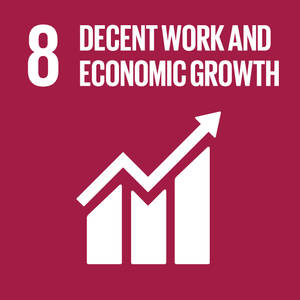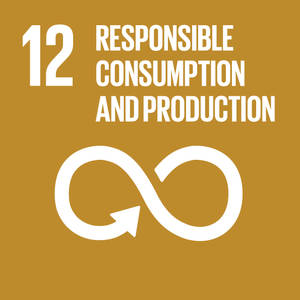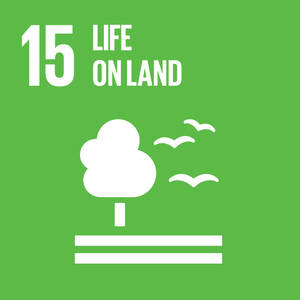Wildlife refers to all living, undomesticated organisms inhabiting natural environments (Chandra, 2011). In the context of wildlife management, the term ‘wildlife’ in this module focuses on terrestrial vertebrates in all biomes and geographic areas.
Wildlife is extremely important for both people and the environment as it is an essential natural resource and it contributes to the maintenance of forest ecological services and ecosystem health.
It plays a key role in regulating natural processes at all levels of the food chain, including seed dispersal, nutrient cycling even landscape structure, and delivers provisioning services (such as those that produce food and income) to a substantial proportion of the world’s poorest people, including forest-dependent communities as well as urban populations. Wildlife contributes to national economies, too, through such things as tourism and the trade in wild animal products.
There are many uses for wildlife, and they are generally organized into two categories: 1) extractive (or consumptive) use refers to the removal of wildlife from its habitat and often involves reductions in wildlife populations by killing (e.g. hunting); and 2) non-extractive (or non-consumptive) use implies unintrusive action on wildlife populations (e.g. wildlife photography and bird-watching), but also non-traditional uses such as harvesting a specific product (e.g. eider down, vicuña fiber) (Lichtenstein, 2009). Wildlife can be used for subsistence, commerce or recreation.
Wildlife management
Wildlife management
Wildlife management is defined as the application of science-based and local knowledge in the stewardship of wild animal populations (including game) and their habitats in a manner that is beneficial to the environment and to society (IUFRO, 2017). Wildlife populations are managed for several reasons, such as: to control an over-population; to avoid over-harvesting; to maintain populations at levels compatible with the sustained yield of products such as food, trophies and furs; and to support ecosystem processes and resilience.
Currently, a series of natural and anthropogenic pressures, such as continued degradation and loss of forests, grassland and wetland ecosystems, conversion of forest habitats to agricultural fields, unsustainable commercialization of wildlife, climate change, spread of zoopathogens, among others, threaten wildlife, which has serious consequences for vital ecological processes and on the livelihoods of those people who depend on it.
Given these multiple pressures, sustainable wildlife management (SWM), defined as “the sound management of wildlife species to sustain their populations and habitats over time, taking into account the socioeconomic needs of human populations”, is becoming a more and more common approach (CPW, 2014). This approach goes beyond protecting individual species or meeting hunting demands, but rather it focuses on wildlife as a renewable natural resource in a holistic way, for the benefit of present and future generations. This requires that all land users within wildlife habitats be aware of and consider the effects of their activities on their wildlife resources and habitats. A more mindful use of forests is of benefit to them.
The SWM approach greatly supports sustainable forest management (SFM) and biodiversity conservation by emphasizing the benefits to humans of forest biodiversity, and encourages people to safeguard and value wildlife by managing it responsibly.
SWM requires appropriate policies, social acceptability and good governance. It can be best achieved through by generating benefits locally, which may include generating income (commercial harvesting and wildlife-based tourism), subsistence (wild meat consumption), recreation and cultural affirmation, such as for Indigenous Peoples (Morgera and Wingard, 2009).
Linkages between wildlife and forest management
Linkages between wildlife and forest management
Wildlife and forest management are not only compatible, but are intrinsically interconnected. Forests are the most biologically diverse ecosystems on land, and harbour most of Earth’s terrestrial biodiversity (MEA, 2005).
While implementing SFM, it is crucial to recognize that forest management has direct implications for the habitat and living conditions of wildlife. The intensity and scope of forest management activities affects vegetation distribution as well as abundance and coverage, which sometimes leads to increased fragmentation of the forest landscape and a decrease in habitat quality. This can further alter the community structure, abundance of wildlife species and their spatial distribution and behaviour. For example, by opening up the canopy and shifting much of the primary production to the understory, logging tends to simplify the vertical stratification of forest species, sometimes causing birds of the canopy layer to forage at lower levels. This shift in productivity may benefit large terrestrial browsers, like elephants and okapis in African forests, or tapirs in neotropical forests (Peres and Barlow, 2004). In temperate forests, clear cutting systems can favour roe deer which like clearings and forest edges for food and thickets for cover (Matthews, 1991).
As well, the amount of wildlife, the presence of particular species and their feeding and behavioural patterns, can greatly affect forest health. For example, when cervids (deers) experience external stress, they sometimes mark their territories by rubbing trees or stripping bark, which severely damages the forest, reduces its productivity, slows forest regeneration, all with important economic implications. Bears can strip bark with their claws to reach the newly formed wood underneath (Nolte and Dykzeul, 2000). Different species across temperate and tropical ecosystems can have different effects. Forest damage caused by wildlife leads to reduced productivity and forest regeneration and can have serious economic consequences.
On the other hand, wildlife provides a wide range of ecological services with multiple benefits for forest health and productivity. Certain wildlife species, such as gibbons, elephants, rhinoceroses, hornbills and imperial pigeons, act as dispersers of large seeds. For example, African elephants disperse more seeds of more tree species, and over greater distances, than any other animal, which makes them important for the African rainforest. Certain wildlife species can act as biological control for pests. Bats can consume as much as one-half their body weight in insects, thereby helping control the population of insects that are harmful for forest, in addition to pollinating flowers and dispersing seeds.
Wildlife must be recognized as an integral part of SFM, taking into account continued deforestation, forest fragmentation and climate change. Wildlife distribution, population levels and diversity have an impact on forest productivity, health and regeneration. The socio-economic values and functions of wildlife should be considered as part of a regional set of criteria and indicators for SFM, since wildlife issues are essential in guiding, monitoring and assessing the SFM process (FAO, 2017).
Wildlife and food security
Wildlife and food security
Wildlife plays a crucial role in food security, and, therefore, in the nutritional well-being of an individual, especially in developing countries, where famine and malnutrition are severe problems. Mainly, wildlife contributes to the food security of both rural and urban households, directly through the consumption of wild meat. Wild meat is considered an important part of the diet and a crucial source of animal protein, especially where people live in close proximity to forest and fallow areas.
Wildlife can also have both positive and negative influences on food production systems. Some wild species could play an important role in seed dispersal, pollination and as fertilizers. For instance, some species of mammals such as monkeys and baboons are known to spread the seeds for fruit trees. On the other hand, some wild animal species, due to their role as intermediate hosts for parasites and disease pathogens, can potentially transmit diseases to humans and livestock.
Besides its importance as food, wildlife plays other crucial roles such as providing employment and generating income generating opportunities. It also has a role in the physical, spiritual and cultural well-being of people. And, it is a source of food, which is important for food security. For instance, trade in wild meat and wildlife products as well as wildlife-based industries such as tourism and recreation contribute significantly to both national and household food security by generating financial resources, which can be used directly to purchase food or to develop and improve food production systems. The sub-products of wildlife such as skins, hides, bones, shells and horns contribute to local economies, as they are often locally used for manufacturing clothing or they are shipped and exported for processing into more sophisticated leather products.
International policy framework
International policy framework
SWM is the focus of considerable international effort. Due to the important roles it plays for biodiversity conservation, food security and livelihoods, and human health and well-being, SWM is included in the 2030 Agenda for Sustainable Development and its Sustainable Development Goals (SDG). SWM is critical to achieving several SDGs, specifically those related to solving the root causes of poverty and hunger, namely, SDG1 - No Poverty and SGD 2 - Zero Hunger, and due to its connection with forest management and biodiversity, SDG 15 - Life on Land.
Building partnerships with governments, private sector and civil society to create shared vision, regulations and incentives is key to developing and implementing long-standing interventions to manage wildlife. Therefore, implementing SWM is crucial because it contributes towards achieving SDG 17 - Partnerships for the Goals.
In recognition of the important role wildlife management plays in achieving sustainable development, the Conference of Parties (CoP) of the Convention on Biological Diversity, in its Decision XI/25 in 2012, requested that a Collaborative Partnership on Sustainable Wildlife Management (CPW) be established to better address the issues related to wildlife. The CPW was formally established on the margins of the 16th meeting of the CITES COP in Bangkok, in 2013.
At the moment, the Convention on Biological Diversity recognizes the importance of SWM, particularly the sustainable wild meat sector, through Decision 14/7, which was adopted at the 14th meeting of COP in Egypt in 2018. Further information about the wildlife work of CBD can be found here.
The Convention on International Trade in Endangered Species of Wild Fauna and Flora (CITES) protects wildlife resources by ensuring that international trade in wild plants and animals is legal, sustainable and traceable. CITES recognizes the critical role of local and indigenous communities that live on the frontlines of wildlife conservation and sustainable management, and their need for adequate incomes and livelihoods.
As the UN Decade on Biodiversity 2011-2020 comes to an end, there is a need emerging to integrate wildlife issues into the post-2020 biodiversity global framework of CBD in order to address wildlife issues such as unsustainable hunting of bushmeat, legal use and trade in wild fauna and flora and an increased awareness of the many dimensions of SWM among member countries.










